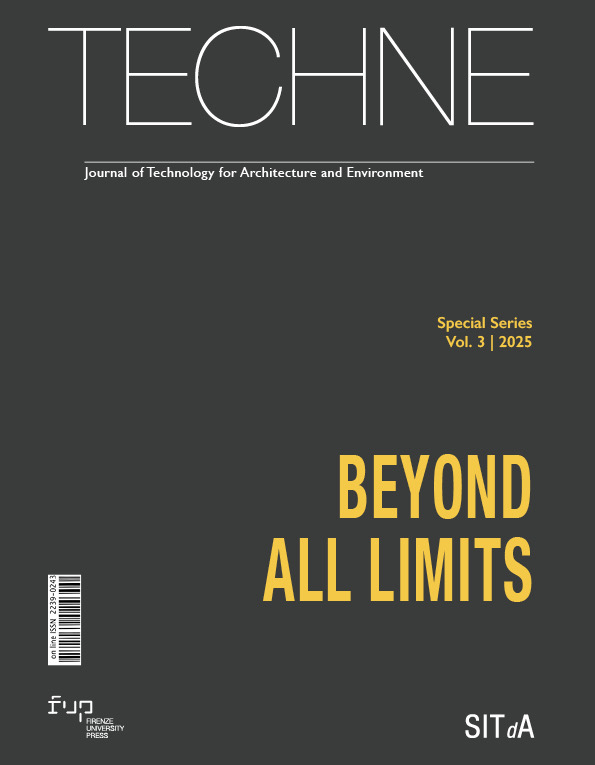Published 2025-07-31
Keywords
- digital narratives,
- visual perception,
- AI representations,
- drone footage,
- ecological awareness
How to Cite
Copyright (c) 2025 Alice Palmieri

This work is licensed under a Creative Commons Attribution 4.0 International License.
Abstract
The New European Bauhaus, through its implementation strategies, proposes a multidisciplinary vision to promote the values of beauty, inclusion, and sustainability. The “Designing with more-than-humans” project applies this vision to the Cratere degli Astroni Nature Reserve, utilising digital narratives that blend real and artificial images to raise awareness of the human-nature relationship and territorial identity. Through a transdisciplinary approach, the team analysed key local elements, exploring physical and perceptual relationships. The digital representation, combining macro and micro perspectives, visualises the dialogue between these elements in a video-graphic work that overlays aerial footage, textual content, and AI-generated images, offering new perspectives on natural heritage.
Downloads
References
- Crary, J. (2013), Le tecniche dell’osservatore. Visione e modernità nel XIX secolo, Piccola Biblioteca Einaudi, Torino.
- Dotto, E. (2020), “In sovraimpressione. I layers e la lettura delle immagini”, in Cicalò E., Trizio I. (Eds), Linguaggi Grafici. Illustrazione, Publica, Alghero, pp. 142-165.
- Drengson, A. (ed., 2005), The Selected Works of Arne Naess, vol 1-10, ed. Springer, Dordrecht https://doi.org/10.1007/978-1-4020-4519-6 DOI: https://doi.org/10.1007/978-1-4020-4519-6
- Foucault, M. (2011), Spazi altri. I luoghi delle eterotopie, Mimesis, Milano.
- Klee, P. (2004), Confessione creatrice ed altri scritti, Abscondita, Milano.
- Maldonado, T. (2005), Reale e virtuale, Feltrinelli, Milano.
- Morton, T. (2018). Being Ecological, Pelican, London. DOI: https://doi.org/10.7551/mitpress/11638.001.0001
- Nasi, F. (2023), “Editoriale”, in Nasi F., Valera L. (Eds) Riga, n. 46, Arne Næss, Quodlibet, Macerata.
- Pinotti, A., Somaini, A. (2016), Cultura visuale. Immagini sguardi media dispositivi, Einaudi, Torino.
- Porro, M. (2023), “La deep ecology di Arne Næss”, doppiozero. Available at: https://www.doppiozero.com/la-deep-ecology-di-arne-naess (Accessed on 04/11/2024).
- Ranzo, P., Scarpitti, C. (2024). “Per un design more-than-human: la condizione digitale e l’estetica post-antropocentrica”, in GUD – Genova University Design, vol. n.9. Stefano Termanini Editore, Genova, pp. 6-15. Available at: https://www.stefanotermaninieditore.it/portale/gud-design-2/gud09-01_2024-iperumano-hyperhuman/
- Sposito, A. (2017), Architecutre and Nature, AGATHÓN, n.2, International Journal of Architecture, Art and Design. Available at: https://www.agathon.it/agathon/article/view/25/37
- Vitta, M. (2012), Il rifiuto degli dèi. Teoria delle belle arti industriali, Einaudi, Torino.






